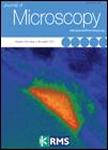版权所有:内蒙古大学图书馆 技术提供:维普资讯• 智图
内蒙古自治区呼和浩特市赛罕区大学西街235号 邮编: 010021

作者机构:Univ Oxford Sir William Dunn Sch Pathol S Parks Rd Oxford OX1 3RE England Oxford Brookes Univ Dept Biol & Med Sci Gipsy Lane Oxford OX3 0BP England
出 版 物:《JOURNAL OF MICROSCOPY》 (显微镜学杂志)
年 卷 期:2016年第263卷第1期
页 面:3-9页
核心收录:
学科分类:07[理学] 08[工学] 0804[工学-仪器科学与技术]
基 金:BBSRC [BB/D524567/1, BB/L014122/1] Funding Source: UKRI Biotechnology and Biological Sciences Research Council [BB/D524567/1] Funding Source: Medline
主 题:Serial block face scanning electron microscopy SBFSEM 3D reconstruction data processing and analysis
摘 要:Serial block face scanning electron microscopy is rapidly becoming a popular tool for collecting large three-dimensional data sets of cells and tissues, filling the resolution and volume gap between fluorescence microscopy and high-resolution electron microscopy. The automated collection of data within the instrument occupies the smallest proportion of the time required to prepare and analyse biological samples. It is the processing of data once it has been collected that proves the greatest challenge. In this review we discuss different methods that are used to process data. We suggest potential workflows that can be used to facilitate the transfer of raw image stacks into quantifiable data as well as propose a set of criteria for reporting methods for data analysis to enable replication of work. Lay description A three-dimensional (3D) microscopy technique, serial block face scanning electron microscopy (SBFSEM), is becoming increasingly popular in biological research. The technique results in large volumes of data being produced, which can cause issues such as for data analysis. This review explores the different methods being used in published work and makes suggestions about how these methods can be reported to enable replication of the research conducted.